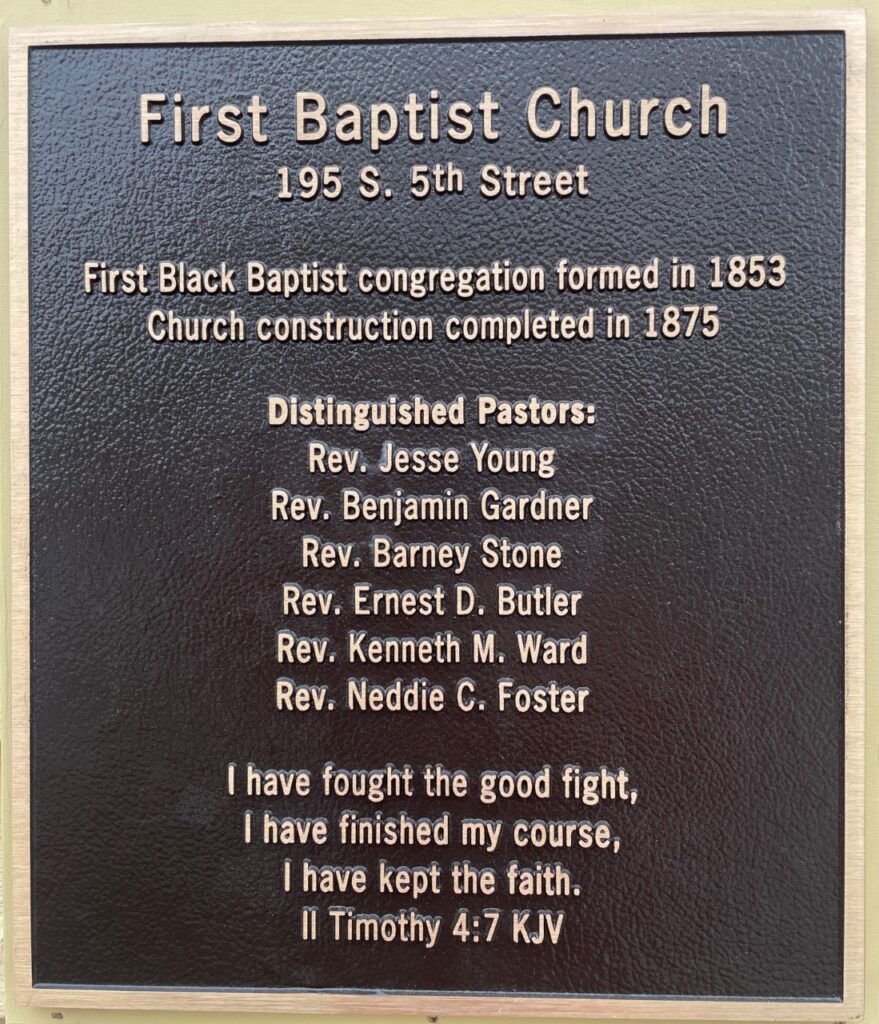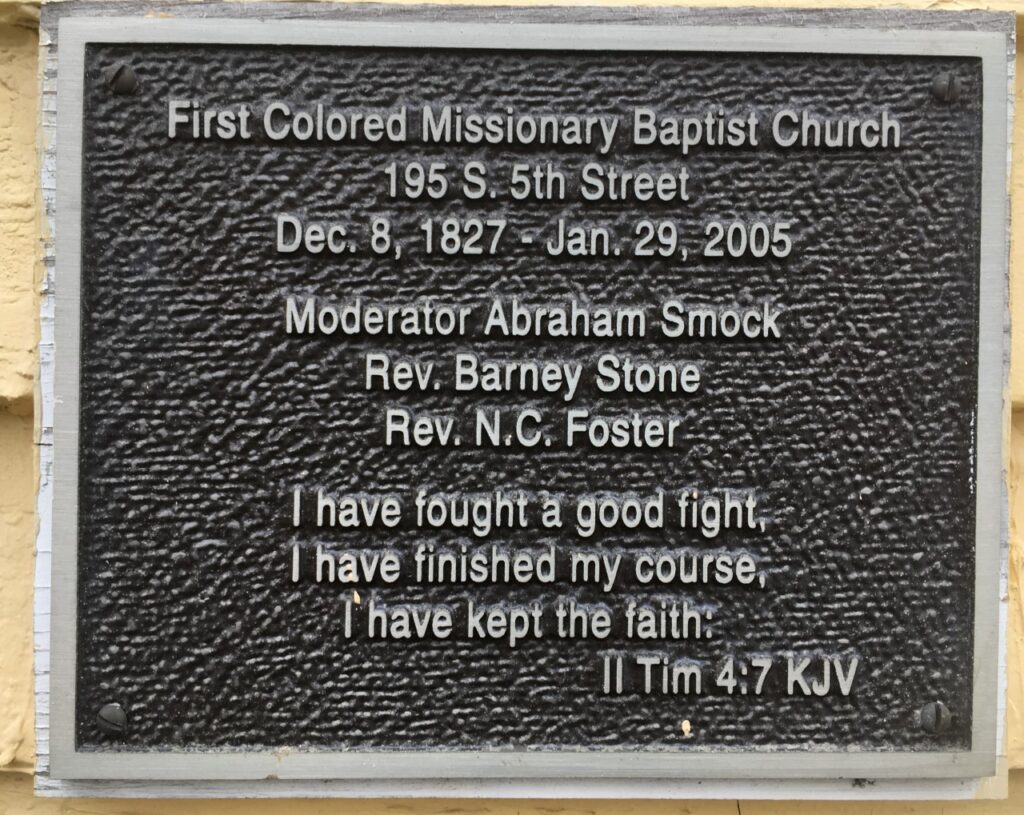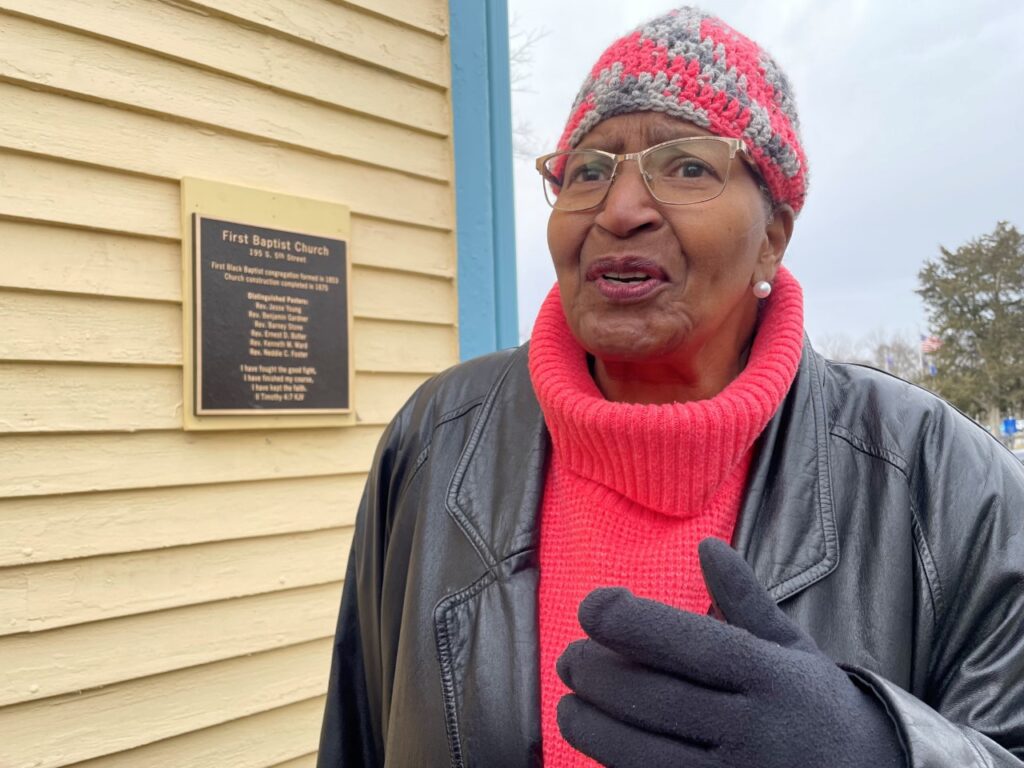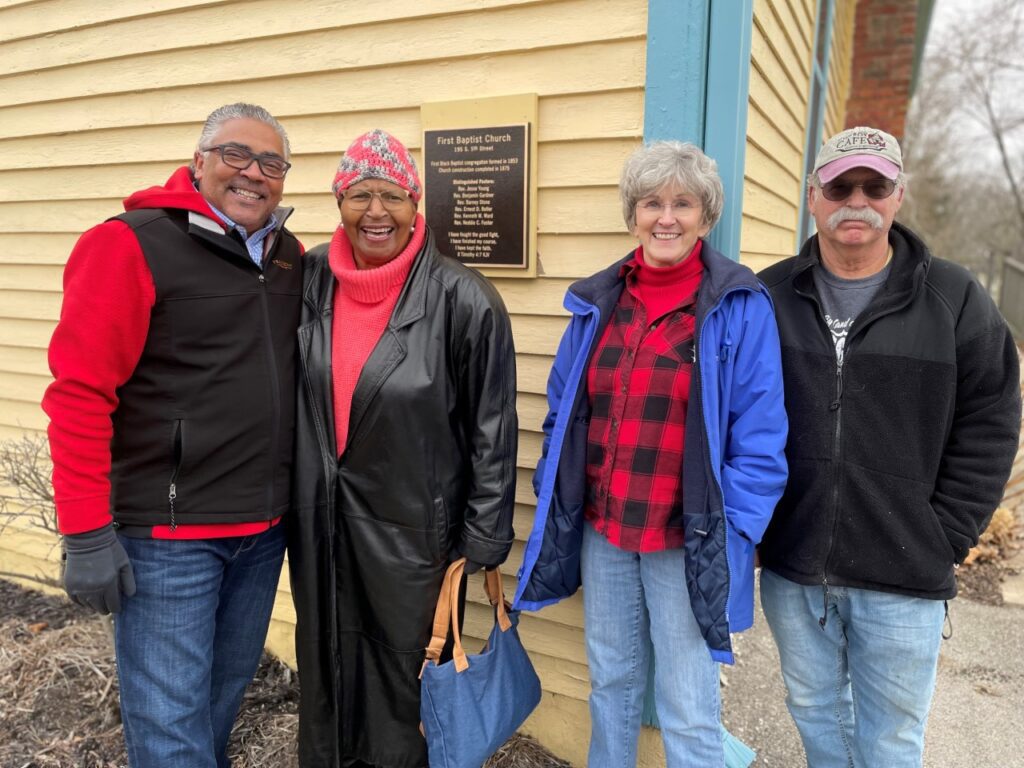Words matter: HCAA Birdie Gallery removes ‘colored’ from historical marker because word is outdated term
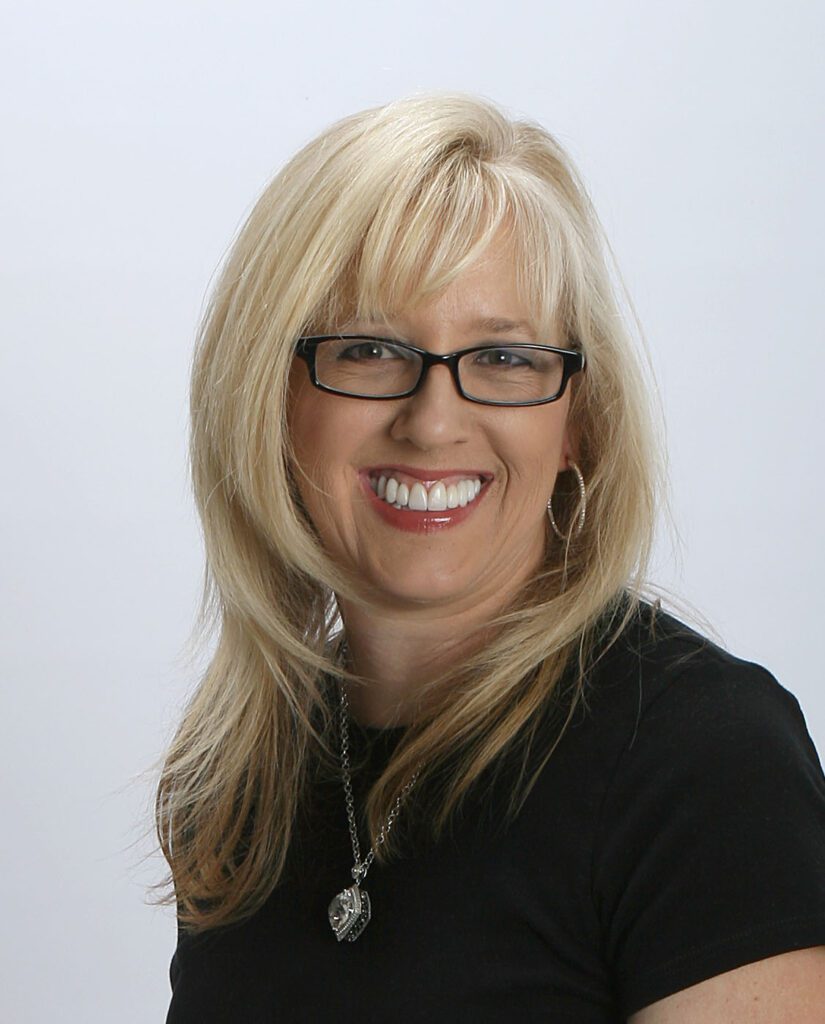
Constance Jones grew up in the oldest black Baptist Church in Hamilton County, established in 1853, and she’s proud of it.
“We were the colored Baptist Church. That’s what we were called back then,” said Jones, 82, Noblesville, proudly reminiscing as she sat on a wooden church pew last Wednesday in the former church building, which is now the Hamilton County Artists’ Association Birdie Gallery at Fifth and Cherry streets in downtown Noblesville.
“This was my church. This was my social life, and this was given to me by the last pastor to take care of the business of the church…,” said Jones, the daughter of Denver and Ellen Holman (her mom played piano at the church) and whose grandfather was a church deacon. She said, “I accepted the Lord here when I was 10 years old.”
A year ago, I shared a story in my column about how the HCAA Birdie Gallery would decide to change the wording of an historical marker on the exterior of the building after a visitor questioned the word “colored” used to describe the former Baptist church building’s black congregation.
In the 21st century, the word “colored” is an outdated term.
The HCAA gallery visitor who had noticed the use of the word “colored” on the building’s historical marker contacted the Noblesville Diversity Coalition (NDC) about replacing the marker. Upon receiving the message, NDC member Bryan Glover contacted then HCAA president Sue Payne, county historian David Heighway, Jones and her daughter, Regina A. (Jones) Mack.
“Today, ‘colored’ is generally considered offensive because of the word’s association with a long history of racial segregation,” Glover said. “Most black people, including myself, do not use the label ‘colored’ except in circumstances when it is appropriate for writing about our history.”
But Constance Jones isn’t offended. “As far as I’m concerned, I don’t have a problem with ‘colored’ because that’s what we were called then. That was our identification … It has since evolved to ‘colored’ to ‘black’ to ‘African-American.’ I prefer ‘people of color,’” Jones said.
Historical research ended up finding several documents that show the original, official name of the church was First Baptist Church.
Given Constance Jones’ history with the church, she and daughter Regina (Jones) Mack, a 1978 graduate of Noblesville High School and a fourth-generation member of the former First Baptist Church, were invited to be a part of a committee — that would also include Glover and board president Dana Randall, and Hamilton County historian David Heighway — to do research on the history of the name of the church and come up with a plan if they decided to revise the plaque.
In his research of the Baptist church, Heighway found a newspaper article about a 1930s court case, with another church wanting the name, but the court ruled that this congregation at 195 S. Fifth St., was the “First Baptist Church” and that “colored” was not a part of the official name of the church.
Glover said, “It’s complicated. But our interpretation of everything that we could find in the newspapers was that the word, ‘colored,’ was something that was just used in those days … to distinguish black from white. So color often got put in legal documents.”
The committee would eventually decide to revise the verbiage on the marker, with the removal of the word, “colored,” to represent the historically accurate name, First Baptist Church. But the plaque would also read, “First Black Baptist congregation formed in 1853.”
NDC’s mission is to build a more welcoming and inclusive community for all people, said Noblesville’s Corinne Gunter, NDC’s social media specialist.
Glover is hoping that the community can connect with the story of the church. “The important thing is to know we have this rich, diverse history that goes back to the early days of Noblesville; we need to embrace that. The plaque, to me, is the thing that commemorates it all …We have to be sensitive to the past, and what things were called, and sensitive to today’s times, how they think of things … It’s complicated. There is not just an easy answer.”
Last Wednesday was the first time that Constance Jones saw the new plaque that is now displayed on the exterior of the building.
“I’m thankful and grateful for the plaque,” Jones said. “If it makes people happy, that’s fine. I just want people to know the beginnings.”
On the new plaque, Glover said in the name of the church, “there is no reference to any racial congregation, just its legal name.” But the plaque also reads “First Black Baptist congregation.”
They all helped make the revisions to the plaque, and Jones said, “I chose the scripture on the plaque,” which reads, “I have fought the good fight, I have finished my course, I have kept the faith. II Timothy 4:7 KJV (King James Version).
A Noblesville native born at Harrell Hospital on Ninth Street half a block north of the Square in downtown Noblesville, Jones graduated from Noblesville High School 65 years ago and has lived her entire life in Noblesville, except for eight years in El Paso, Texas. Her ex-husband is Charles Jones, the first black police officer in Hamilton County. They’re the parents of three, Regina Mack, Alicia and Mark Jones, who all graduated from NHS.
Jones’ mom served on the Civil Rights Commission and was secretary of the Boys & Girls Club of Noblesville’s Auxiliary. Jones served on the board of directors for Habitat for Humanity for more than 10 years and also chaired its family selection committee for 10 years.
“We have been extremely active in Noblesville because this is our home. It’s been gratifying. I sang the National Anthem on Senior Night at the high school,” she said.
Jones is distantly related to Glover, and both are descendants of the Roberts Settlement, an African-American pioneer farm settlement in Atlanta, Ind.
Glover, a 1975 Noblesville High School graduate, who was the liaison between the HCAA and the NDC, grew up in Noblesville, his family living in Hamilton County since the 1830s. His parents attended school here in the 1930s and 1940s.
He remembered the old notices in The Ledger, which would print the word, “colored” in parentheses after Baptist Church. “Given that I saw it done often enough, it looked to me like they were trying to make sure the readers of the newspaper knew which Baptist church we were talking about,” Glover said.
One of the ministers mentioned on the historical marker is the Rev. Barney Stone, an ex-slave, Civil War veteran, “highly respected citizen of Noblesville” and a preacher in the former Baptist Church. There is an historical picture of the Rev. Stone displayed inside the Birdie Gallery. His daughter was Constance Jones’ Sunday school teacher, and they would celebrate the Rev. Stone’s birthday every year in Noblesville “which was highly unusual at the time to do that,” she said. He was a slave who escaped from slavery and settled here when he was able to, and went back and got the rest of his family, she said. “He was quite a man.”
The Rev. Ernest Butler, a Hamilton County civil rights leader who was instrumental in desegregating the city’s swimming pool, was another of the well-known black ministers at the former First Baptist Church.
Noblesville artist Rodney Reveal, 72, Noblesville, a 1968 NHS graduate, painted a picture of the former church and made prints for Jones and, for this project, he removed the old plaque and replaced it with the new plaque on the building.
The former historical marker is stored away as an historical artifact, said Payne, past president of the HCAA.
The topic is timely for Black History Month, celebrated each February, with 2022 marking its 46th year.
Payne, who was born in Riverview Hospital, said this is a wonderful opportunity to bring this awareness. “HCAA has always been proud of that heritage.”
Randall said, “The part that’s so cool about Noblesville Diversity Coalition and other groups, is if you take the journey, you get to go back into history and experience in that context … and uncover an amazing history … This was a great experience for us.” – Contact Betsy Reason at [email protected].

